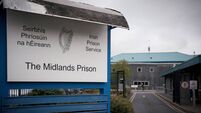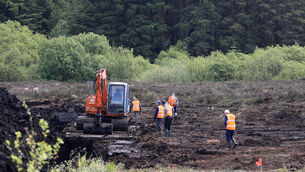Pray for our babies, plead conjoined twins' parents
The twins were delivered by Caesarean section at the National Maternity Hospital at Dublin's Holles Street at 8.30am on Monday.
Just hours afterwards, they were transferred to Our Lady's Hospital where, after intensive medical investigation, they were found to be unsuitable for separation.
A statement issued by Our Lady's Hospital yesterday said the twins remained in a critical condition and that the parents had asked that people would pray for the children.
The parents have also asked that their privacy be respected and the hospital said it would adhere to their wishes.
The hospital added that regular information bulletins on the twins' condition would not be issued.
Conjoined twins occur in about one out of every 200,000 live births and are three times more likely to be female than male.
Dr Fionnuala McAuliffe, a maternal and foetal medical specialist at the National Maternity Hospital, said around 40% of conjoined twins would be stillborn.
Dr McAuliffe, who has dealt with the birth of a small number of conjoined twins, said only a third of those born alive are considered amenable for surgical separation.
She said an operation to separate conjoined twins was ruled out where the heart and the liver were joined.
"The majority of conjoined twins are joined at the chest and the tummy and many of them face that difficulty where they share the heart and liver," she said.
She said that a third of twins born alive would die during the first 24 hours, while another third would be considered unsuitable for separation.
Dr McAuliffe explained that a separation procedure was usually performed when the children were around six months of age, but only 60% would be expected to survive the operation.
"The outlook for such children is not very good, but like any pregnancy where there are complications, we do tell the parents as much as we can," she said.
Dr McAuliffe said that technology was playing a greater role in delineating the shared anatomy.
"With ultrasound, foetal echo cardiography and MRI we can give the parents a better idea as to what we think will happen to the twins at birth," said Dr McAuliffe.
In any complicated pregnancy the parents would be fully informed about what medical experts considered to be the problem and what the likely outcome would be, she said.
Dr McAuliffe said an ultrasound examination would quickly confirm that a woman is carrying conjoined twins.
"It could be detectable during the first three months of pregnancy," she said.
Conjoined twins originate from a single fertilised egg, so they are always identical and of the same sex. As the embryo develops it starts to split into identical twins, but the process stops before it is complete.
This leaves a partially separated egg which develops into a conjoined foetus.
Conjoined twins originate from a single fertilised egg. The developing embryo starts to split but the process stops before it is complete, leaving a partially separated egg that develops into a conjoined foetus.
The birth of conjoined twins is a rare event, occurring only once in every 200,000 live births. Ireland can expect only one set every four years.
The birth of two connected babies can be extremely traumatic. Around half are delivered stillborn, with one in three surviving only a few days.
Around 70% are likely to be girls.
If they have separate sets of organs, chances for surgery and survival are greater than if they share the same organs.
Over the years survival rates have improved because of more accurate imaging studies and better anaesthetic and operative techniques.
Yes. The term Siamese twins was coined as a reference to Eng and Chang Bunker, who achieved international fame following their birth in what was then Siam in 1811.
The first such procedure occurred in 1953.
Yes, Niamh and Aoife McDonnell, who were joined at the chest, were successfully separated 11 weeks after they were born in Manchester in April 1997. They live with their parents in Castlebar, Co Westmeath. Eilish Holten, Donadea, Co Kildare, born in 1998, survived a procedure to separate her from her sister, Katie, when they were toddlers. Sadly, Katie, who had grasped the idea of separation more than her sister, died following the operation.
Compiled by Evelyn Ring.












